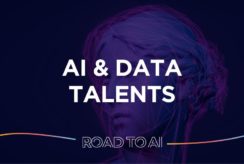Each new HRIS project launched confirms the growing role of data in the discussions undertaken. The “Data Centric” orientation has become a strategic priority of all major projects, it structures part of the urbanization choices and feeds into the design and implementation work. Better still, by its “permanent” nature, HR data is now considered a real “asset” of the HR function and a key component of performance. Applications pass, data remains …
This is under the combined effect of a new business ambition embodied by the quest for performance, but also of the failures observed on certain HRIS projects and the emergence of market offers offering, even imposing, application “bricks” dedicated to data management (Core HR, HR Analytics, Data Visualization tools, etc.), which the “Data Centric” orientation has gradually imposed.
Who says “Performance Centric” says “Data Centric”
HR transformation is based on a central issue of better quality of service, and therefore control of performance. Objectify, measure, anticipate: a priority trio for which mastery of data becomes central.
During the framing phases of HRIS projects undertaken with our clients, this search for performance often translates into a few priority objectives directly linked to the management of HR data.
The work we are undertaking with our clients also addresses each of these objectives and allows the deployment of a culture and working methods oriented around “Data Centric”.
Deploy a culture and working methods oriented around "Data centric"
« Data Centric » and urbanization of HRIS
Two main issues arise in the management of HR data. The first concerns the “sovereign” data necessary for the deployment of the main HR processes within the HRIS (administrative management, recruitment, training, evaluation, etc.). The second concerns the data required to personalize the offer, conduct forward-looking thinking, and create the conditions for better performance. These two issues call for different orientations in terms of urbanization and data management within an HRIS.
On the sovereign perimeter, the establishment of a “Core HR”, an application brick dedicated to data management, is today the response adopted by a majority of organizations, which after having attempted to use their administrative management, or developed their own “HR Base” as data repositories, have observed the severe limits of these options.
The implementation of “Core HR” undoubtedly has advantages in terms of structuring and quality of HR data. It nevertheless contains some complexity factors, more or less important depending on the existing urbanization, in terms of harmonization / standardization of data and of articulation between the “HR Core” and the administrative and payroll management systems.
Beyond the sovereign perimeter, the expectations of the HR function increasingly concern the ability to anticipate, personalize and create the conditions for good decision-making. We thus speak of “Evidence-based Management”, the ability to decide based on “evidence”, in this case data. These expectations are also characterized by an evolution of reasoning logics which favour inductive (versus deductive) approaches for which the exploitation of larger volumes of data, more diversified, structured or not, is becoming a necessity.
In terms of HRIS urbanization, the response to this type of need is mainly reflected in the implementation of architectures articulated around “data lakes”, specific to the HR scope or global at the company level.
Two approaches are mainly observed.
The first consists of combining datalake, an ETL-type tool (Extract Loading and Load – to extract, transform and load data) and a data visualization tool. This architecture is now well mastered but has the main limitations of not operating in real time and requiring heavy maintenance.
The second is based on the implementation of “Lambda and Kappa” type architectures with “Data Streaming” platforms that allow the dissemination of large data in volume and speed in real time.
We understand that HR performance has several dimensions. At a minimum, it concerns the sovereign aspect with the quest for regulatory compliance and the improvement of operational efficiency on the one hand, and the digitalization of talent management processes coupled with an effective capacity for data analysis / visualization on the other. If each of these dimensions correspond to different urbanization patterns, the central role of data remains an essential factor of success.
« Data Centric », the virtues of progressive and structured thinking
Becoming a “Data Centric” is both a transformation and a new challenge for HR and IT teams. But it also and above all represents an exceptional opportunity to create more value.
Many companies have understood this without really knowing how to carry out this transformation which affects both cultural, operational and IS dimensions.
Faced with these large-scale projects, our conviction is that we must adopt a progressive, educational, pragmatic and progressive approach.
It is both a reflection on the HR ambition, the embedding and acculturation of the HR and IT teams on the contribution of data, the exploration of the field of the possible in terms of technological levers and the experimentation within the framework of a progressive and realistic trajectory which will allow you to initiate the necessary switch to “Data Centric”.






